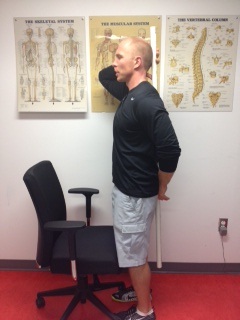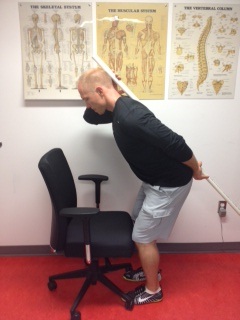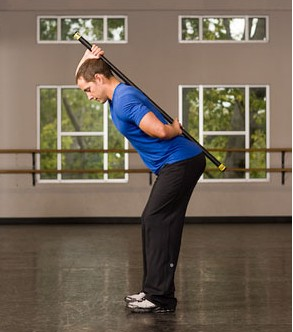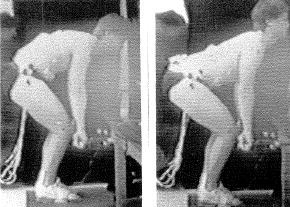With the return of student-athletes to campus, it’s important to remember that not all of these high performing athletes have matching movement IQ’s when it comes to the fundamental hip hinge pattern. In a previous post, The Hip Hinge: The Best Exercise You're Not Teaching In Your Rehabilitation Program, we discussed the need for this fundamental movement pattern within your current rehabilitation program and detailed a solid progression from the simplest of patterning exercises to high level Kettle bell training.
Yet, with the return of classes there appears to be a need for a much easier starting point to begin this fundamental pattern from for those athletes that continue to have difficulty performing this pattern, or for those that require feedback when you are not around (ie: home program).
For the most challenging patients, begin this pattern facing a simple office desk chair. Place your knees to the front edge of the chair while allowing feet to sit underneath. Continue to utilize a broomstick or PVC pipe to ensure your patient maintains a neutral spine while maintaining ALL THREE POINTS OF CONTACT (head, back, butt crack). By demanding all three points, the athlete is forced to hinge at the hips and NOT perform a squat pattern in an effort to satisfy the exercise request. Refer back to the previously mentioned article for additional teaching points and progressions.
-
Stand facing chair with knees pressed either directly against edge with feet underneath.
-
While keeping your spine straight and cervical spine in a neutral position, push hips backward.
-
Forehead should travel directly towards top of chair. Eye gaze should be directly at this point and not upwards which increases likelihood of cervical extension and loss of important joint centration along with neck neutrality.
-
Perform hip hinge pattern without pushing chair forward and/or touching chair edge with knees. Chair should not move during the execution of this exercise.
-
Be sure to maintain three points of contact with PVC pipe.


Start position End position





